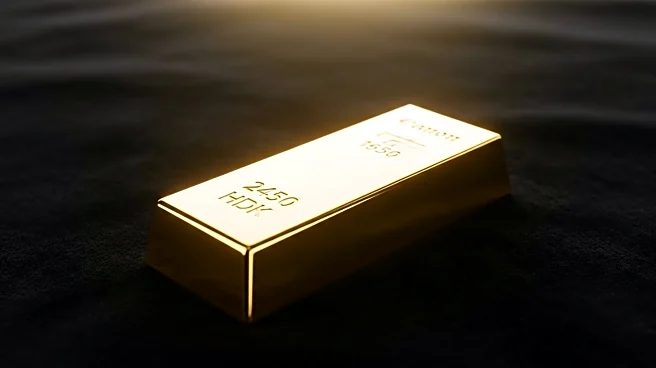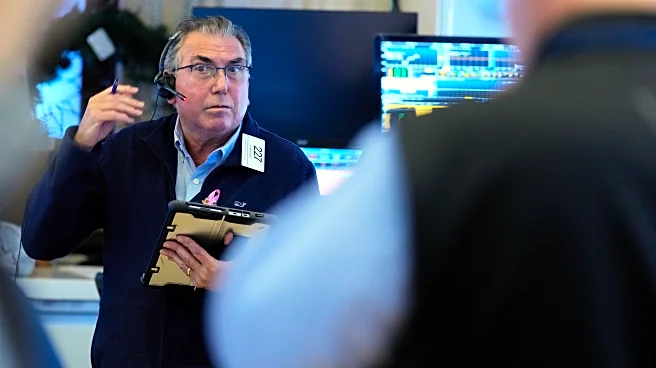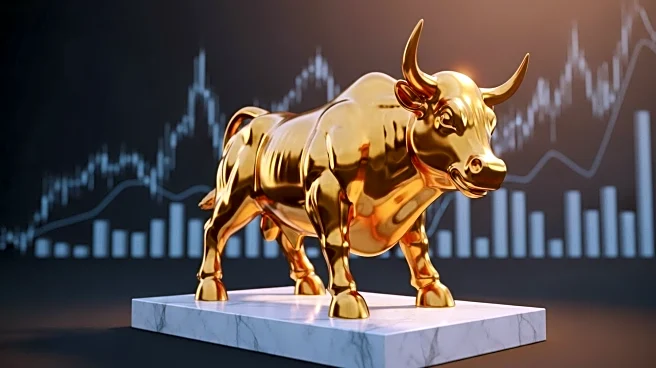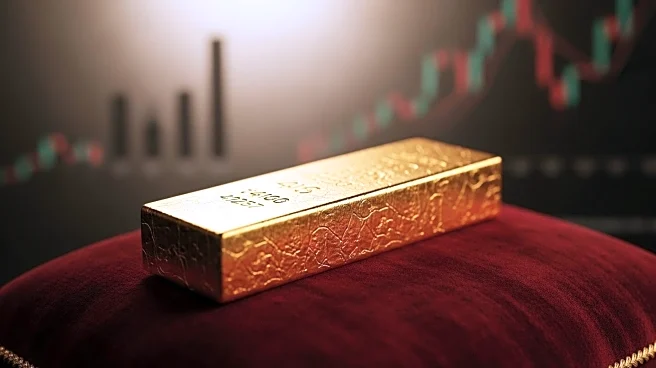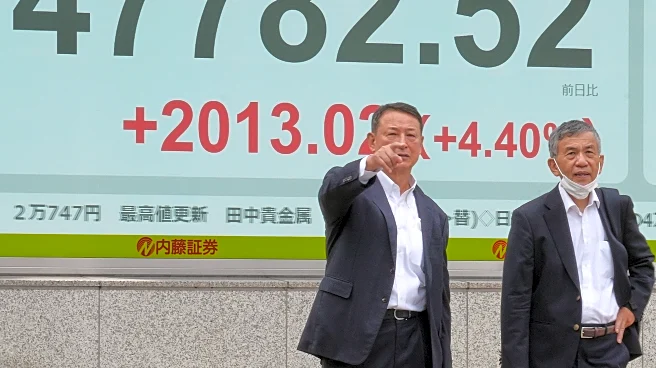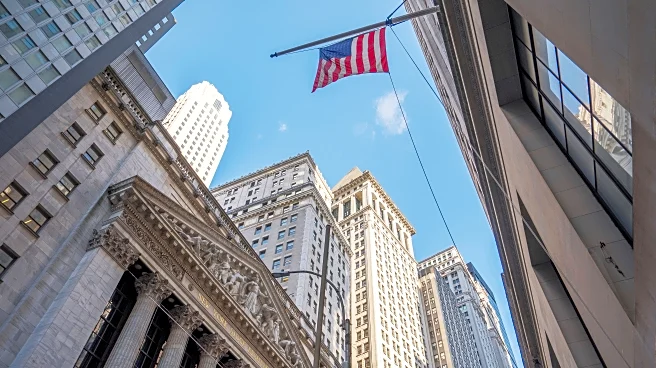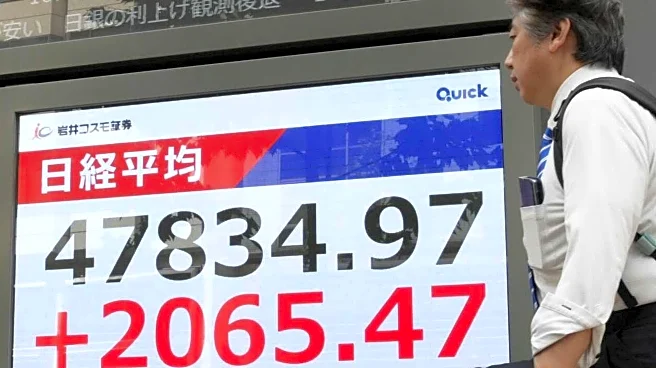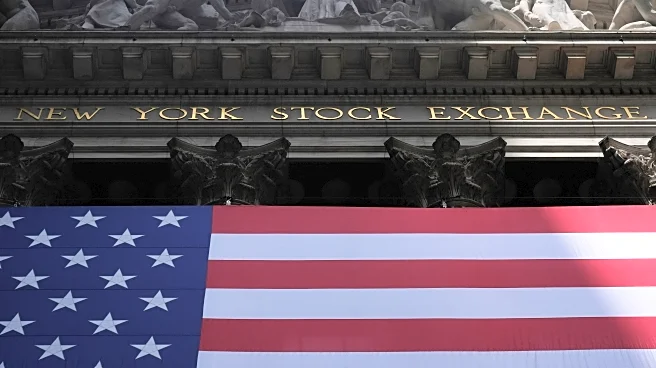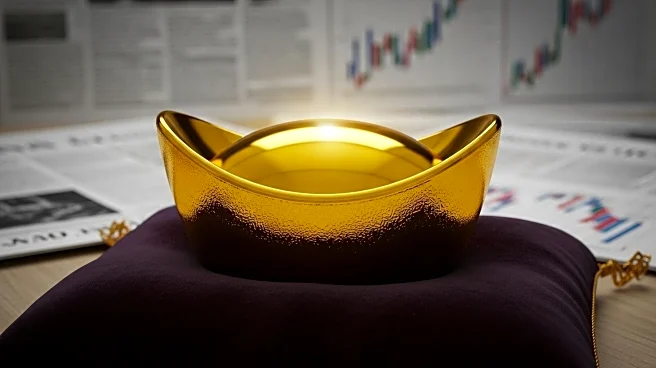What's Happening?
Gold prices have surged past the $3,900 per ounce mark for the first time, driven by safe-haven demand amid a U.S. government shutdown and expectations of further Federal Reserve rate cuts. Spot gold was up 1% at $3,925.91 per ounce, having reached an all-time high of $3,944.63 earlier. U.S. gold futures for December delivery also climbed 1.1% to $3,951.60. The yen's decline following the Japanese LDP elections has reduced its appeal as a safe-haven asset, prompting investors to turn to gold. The ongoing U.S. government shutdown continues to cast uncertainty over the economy, with potential impacts on GDP. The Federal Reserve is anticipated to cut rates further, enhancing gold's appeal as a non-yielding asset in a low-interest-rate environment.
Why It's Important?
The surge in gold prices highlights the growing investor concern over economic stability and geopolitical tensions. As a traditional safe-haven asset, gold's rising value reflects uncertainty in the U.S. economy, exacerbated by the government shutdown and potential mass layoffs of federal workers. The Federal Reserve's expected rate cuts could further bolster gold's attractiveness, as lower interest rates typically enhance the appeal of non-yielding assets. This trend may impact various stakeholders, including central banks, retail investors, and financial markets, as they navigate the implications of economic policies under President Trump's administration.
What's Next?
The Federal Reserve is likely to continue its trajectory of rate cuts, with investors pricing in additional 25-basis-point reductions in October and December. This could sustain the upward momentum in gold prices, as the metal thrives in environments of economic uncertainty and low interest rates. The ongoing U.S. government shutdown may lead to further economic disruptions, potentially influencing market dynamics and investor behavior. Stakeholders, including political leaders and financial institutions, will need to monitor these developments closely to assess their impact on the broader economy.
Beyond the Headlines
The current economic climate, marked by geopolitical tensions and fiscal uncertainties, underscores the importance of safe-haven assets like gold. The metal's rally may prompt ethical and strategic considerations for investors and policymakers, as they weigh the implications of economic policies and global trade dynamics. Long-term shifts in investment strategies could emerge, with increased focus on hedging against economic volatility and geopolitical risks.


